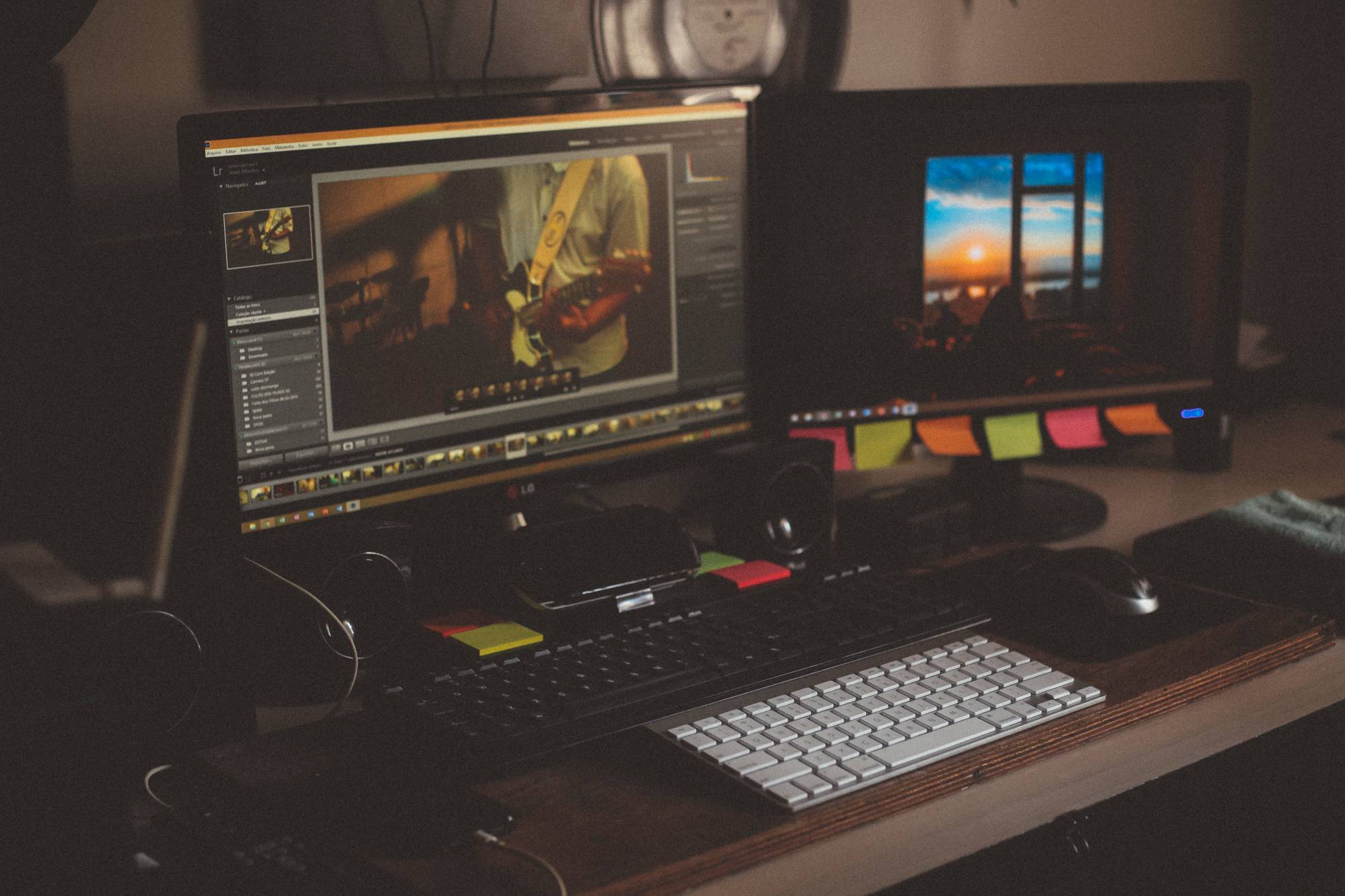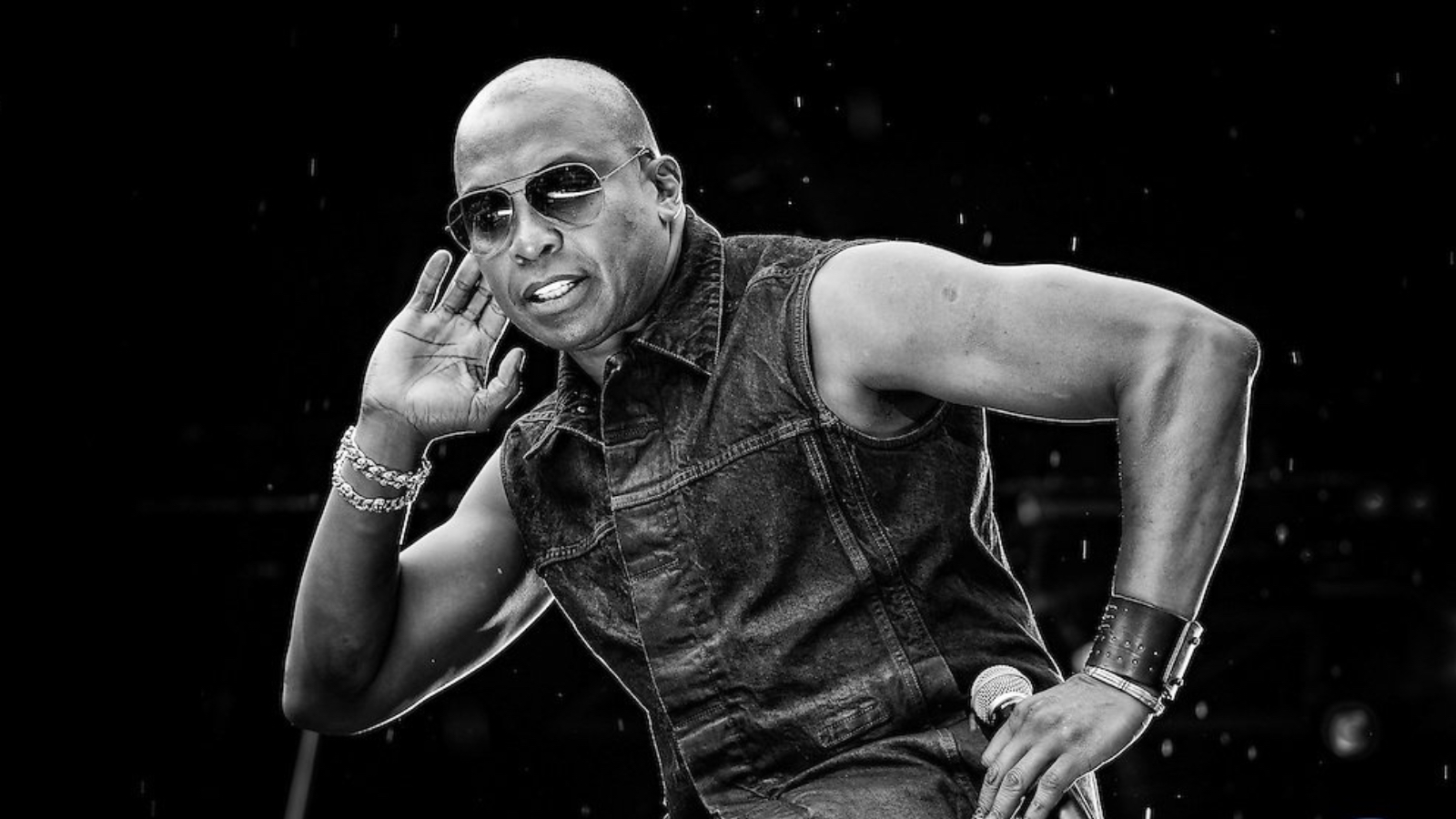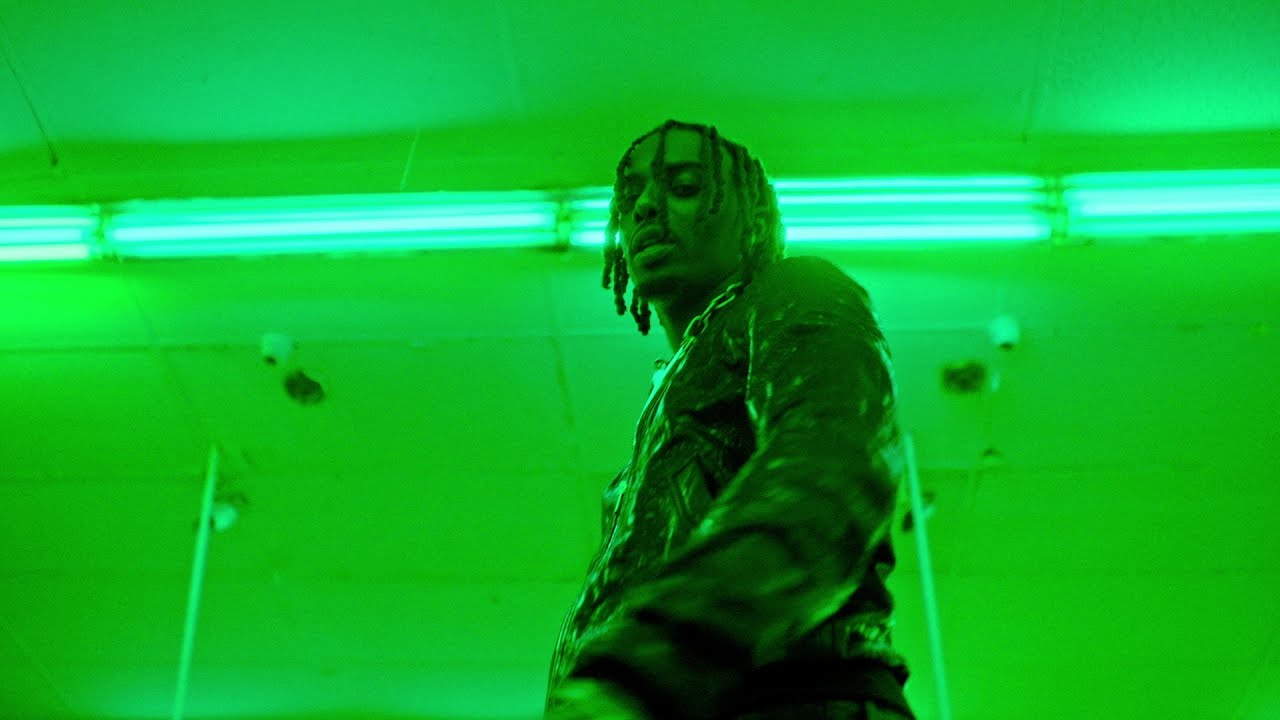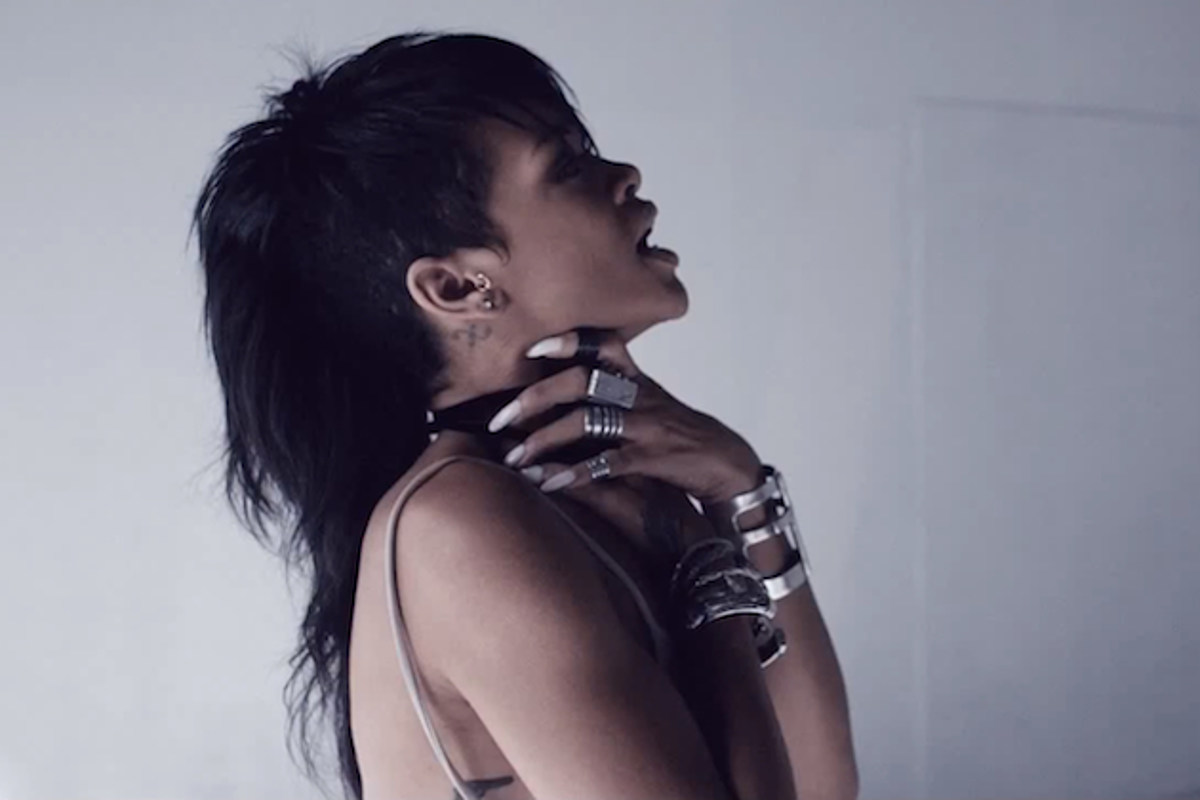Home>Production & Technology>Music Video>What Is A Music Video Visualizer
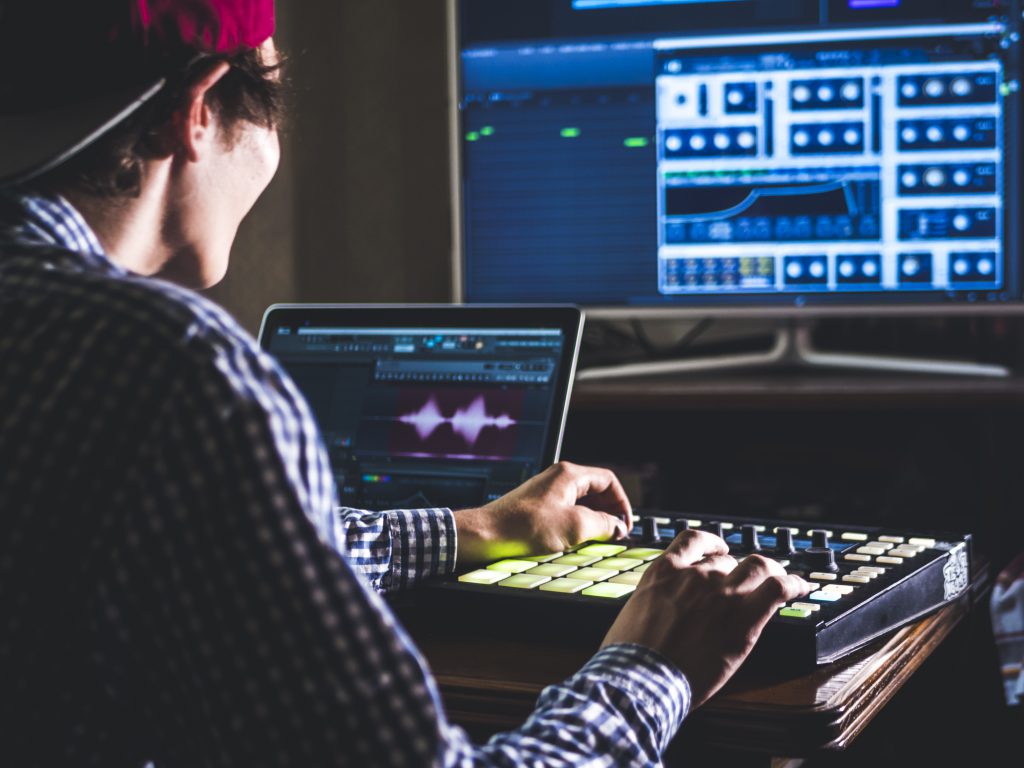

Music Video
What Is A Music Video Visualizer
Published: November 12, 2023
Discover the mesmerizing world of music video visualizers. Learn what they are, how they enhance the music experience, and why they are essential for any music lover.
(Many of the links in this article redirect to a specific reviewed product. Your purchase of these products through affiliate links helps to generate commission for AudioLover.com, at no extra cost. Learn more)
Table of Contents
- Introduction
- Definition of a Music Video Visualizer
- How Music Video Visualizers Work
- Their Purpose in Music Videos
- Types of Music Video Visualizers
- Popular Software and Tools for Creating Music Video Visualizers
- Steps to Create a Music Video Visualizer
- Examples of Music Video Visualizers
- Benefits and Impact of Music Video Visualizers
- Conclusion
Introduction
Music videos have long been a powerful medium for artists to visually express their music and captivate their audience. Over the years, music videos have evolved from simple performance-based visuals to intricate storytelling pieces. With the advancement of technology, a new element has been introduced to the world of music videos – the music video visualizer.
A music video visualizer is a dynamic and interactive element that is often featured in music videos. It enhances the audio experience by creating mesmerizing visual patterns and effects that synchronize with the music. These visuals can range from mesmerizing abstract shapes and colors to immersive 3D animations that transport the viewers into a different world.
The popularity of music video visualizers has skyrocketed in recent years, thanks to platforms like YouTube and streaming services that provide an ideal platform for artists to showcase their music and visuals together. Music video visualizers not only add a visually appealing element to the video but also enhance the overall audio-visual experience for the viewers.
In this article, we will explore the world of music video visualizers, including their definition, how they work, their purpose in music videos, different types of visualizers, popular software and tools for creating them, steps to create a music video visualizer, examples of visually stunning visualizers, as well as the benefits and impact of incorporating them into music videos. So, let’s dive in and discover the amazing world of music video visualizers!
Definition of a Music Video Visualizer
A music video visualizer is a digital tool or software that generates dynamic and synchronized visual patterns and effects in response to an audio input, typically a music track. It is specifically designed to create captivating and visually stimulating visuals that enhance the overall music listening experience. These visuals are often displayed in real-time and are synchronized with the beat, rhythm, and audio elements of the music.
The primary purpose of a music video visualizer is to enhance the visual representation of the music, providing an additional layer of artistic expression and immersion for the viewers. It transforms the audio waveform into captivating visual patterns, creating a mesmerizing and immersive experience that complements the music.
Music video visualizers utilize various techniques and algorithms to analyze the audio input and generate corresponding visuals. These techniques can involve extracting features such as the amplitude, frequency, and timbre of the audio, and converting them into visual elements like shapes, colors, movements, and animations. The visuals are often displayed in sync with the music, ensuring that the viewers can visually perceive the various elements of the track.
Music video visualizers can be either pre-rendered or generated in real-time. Pre-rendered visualizers are created in advance and are added as a separate layer to the music video during the post-production phase. On the other hand, real-time visualizers are generated on the fly, analyzing the audio input in real-time and generating corresponding visuals instantaneously.
The complexity and style of music video visualizers can vary significantly, ranging from simple geometric shapes that pulse and change color along with the music to complex 3D animations that transport the viewer into a captivating digital landscape. The choice of visual style often depends on the artist’s vision and the overall theme and mood of the music video.
Overall, music video visualizers provide artists with a powerful tool to enhance the visual impact of their music and create a more engaging and immersive audio-visual experience for their audience. Whether it’s showcasing the intensity of a beat drop or creating a surreal and dreamy atmosphere, music video visualizers add an extra layer of creativity and enchantment to the world of music videos.
How Music Video Visualizers Work
Music video visualizers are a combination of software, algorithms, and visual design that work together to analyze and interpret the audio input, and generate synchronized visuals in real-time or during post-production. Let’s explore the inner workings of music video visualizers:
1. Audio Analysis: The first step in creating a music video visualizer is analyzing the audio input. This involves extracting various audio features such as amplitude, frequency, and timbre. The software or algorithm analyzes the audio waveform to understand the different elements of the music, such as beats, rhythm, and melodies.
2. Mapping Audio Features to Visual Elements: Once the audio is analyzed, the software maps the extracted audio features to specific visual elements. For example, the amplitude may be represented by the size or intensity of a visual element, while the frequency may be translated into the color or movement of another element. This mapping is customizable and can be adjusted to suit the artist’s vision and the desired visual aesthetic.
3. Real-time Visualization: In the case of real-time visualizers, the software continuously analyzes the incoming audio input and generates visual patterns and effects on the fly. These visuals are rendered in real-time and synchronized with the music, creating a dynamic and immersive experience for the viewers.
4. Pre-rendered Visualization: For pre-rendered visualizers, the audio analysis and visual generation are done in advance during the post-production phase. The visual elements are then added as a separate layer to the music video, ensuring precise synchronization with the audio.
5. Visual Effects and Transitions: Music video visualizers often include various effects and transitions to add depth and visual appeal. These effects can range from simple color changes to complex animations, providing an engaging and visually stunning experience for the viewers.
6. Integration with Music Video: Once the visualizer is generated, it is integrated with the music video. This can involve overlaying the visuals on top of the footage, syncing the visuals with specific moments in the music, or integrating them seamlessly into the overall narrative of the video.
7. Final Output: After the integration, the music video with the visualizer is rendered into a final output format, ready to be shared with the audience. The output can be in various formats, such as high-definition video files or streaming-friendly formats for online platforms.
By combining audio analysis, visual mapping, and real-time or pre-rendered visualization techniques, music video visualizers create a stunning audio-visual experience that enhances the impact of the music. The seamless integration of visuals with the music elevates the overall quality and immersive nature of music videos, captivating the audience and leaving a lasting impression.
Their Purpose in Music Videos
Music video visualizers serve several important purposes in music videos, enhancing the visual appeal and storytelling aspects of the medium. Let’s explore the key purposes of music video visualizers:
1. Engaging Visual Experience: Music video visualizers provide a visually captivating experience for the viewers. By transforming the audio elements into mesmerizing visuals, they immerse the audience in an audio-visual journey that goes beyond just listening to the music. The dynamic and interactive nature of the visualizers keeps the viewers engaged and enhances their overall enjoyment of the music video.
2. Amplifying Emotional Impact: Music is often associated with specific emotions and moods. Music video visualizers heighten the emotional impact of the music by creating visuals that reflect or enhance the mood of the song. Whether it’s through vibrant colors, pulsating shapes, or ethereal animations, visualizers amplify the emotional connection between the music and the audience, making the music video a more powerful and resonating experience.
3. Enhancing the Narrative: Music videos often tell stories or convey specific messages. Visualizers can play a crucial role in enhancing the storytelling aspect of the video. By visually representing the lyrics, themes, or narrative elements, visualizers provide an additional layer of meaning and depth to the music video. They can emphasize certain lyrics or create visual metaphors that further enhance the viewer’s understanding and interpretation of the song’s message.
4. Showcasing Artistic Vision: Visualizers provide artists with a means to showcase their creativity and artistic vision. The unique and visually stunning visuals created by visualizers can become a signature element of an artist’s style. Visualizers allow artists to experiment with different visual aesthetics, styles, and techniques, making their music videos stand out and leaving a lasting impression on the audience.
5. Increasing Viewership and Audience Engagement: Music video visualizers have gained immense popularity, particularly on platforms like YouTube and streaming services. They have proven to be an effective way of attracting viewers and increasing audience engagement. Viewers are more likely to share and revisit music videos that offer an immersive and visually captivating experience. Visualizers can also encourage viewers to spend more time watching the video, increasing the view duration and overall exposure of the artist’s music.
6. Branding and Recognition: Visualizers can contribute to an artist’s branding and recognition. A visually appealing and well-designed visualizer can become synonymous with an artist’s music and style, creating a recognizable visual identity. This branding can reinforce the artist’s image and help them establish a strong presence in the music industry.
Overall, music video visualizers serve as a powerful tool for artists to elevate their music videos and create an enhanced audio-visual experience for their audience. They not only engage viewers on a visual and emotional level but also contribute to the overall success and impact of the music video.
Types of Music Video Visualizers
Music video visualizers come in various types and styles, each offering a unique visual experience. Here are some of the most common types of music video visualizers:
1. Waveform Visualizers: Waveform visualizers display the audio waveform of the music track as a visual representation. The waveform moves and pulsates in sync with the music, providing a visual representation of the audio’s amplitude and frequency. This type of visualizer allows viewers to see the different components of the song, such as beats, drops, and melodies, in a visually appealing manner.
2. Particle Systems: Particle-based visualizers create stunning visuals using particles that move, flow, and interact with each other based on the audio input. These particles can take the form of abstract shapes, light trails, or even elements that resemble natural phenomena like fire or water. Particle systems visualizers provide a mesmerizing and dynamic visual experience, often accompanied by vibrant colors and fluid movements.
3. Equalizer Visualizers: Equalizer visualizers mimic the appearance of audio equalizer bars, where each bar represents a different frequency range within the music. These visualizers visually respond to the levels and frequencies of the audio, moving and changing in intensity as the music plays. Equalizer visualizers offer a classic and recognizable visual representation of the music.
4. Geometry and Shape-based Visualizers: Geometry and shape-based visualizers utilize geometric patterns and shapes to create visually intriguing visuals. These visualizers can include spinning shapes, morphing polygons, or intricate patterns that change and transform based on the audio input. This type of visualizer often creates a hypnotic and mesmerizing effect, playing with symmetry, repetition, and movement.
5. 3D and Virtual Reality (VR) Visualizers: 3D visualizers add an extra level of depth and immersion to music videos. These visualizers utilize 3D models, animations, and virtual reality environments to create a fully immersive and interactive experience for the viewer. 3D visualizers can transport the viewers into a virtual landscape where they can explore and interact with the music in a visually stunning way.
6. Abstract and Artistic Visualizers: Abstract and artistic visualizers focus on creating visually stunning and imaginative visuals that go beyond literal representations of the music. These visualizers often include unique and unconventional visual elements, such as fractal patterns, texture mapping, or glitch effects. Abstract visualizers aim to evoke emotions and provoke artistic interpretation, allowing viewers to experience the music in an abstract and visually captivating manner.
Each type of visualizer offers its own aesthetic appeal and can enhance different aspects of the music video. The choice of visualizer type depends on the artist’s vision, the genre of music, and the overall mood and theme of the video. By selecting the most suitable visualizer, artists can create a visually stunning and memorable music video experience for their audience.
Popular Software and Tools for Creating Music Video Visualizers
Creating music video visualizers requires specialized software and tools that allow artists to analyze audio, generate synchronized visuals, and integrate them into their music videos. Here are some popular software and tools used for creating music video visualizers:
1. Adobe After Effects: Adobe After Effects is one of the most widely used software for creating visually stunning visualizers. It offers a wide range of visual effects, motion graphics, and animation tools that allow artists to create intricate and mesmerizing visuals. After Effects provides features for audio analysis, waveform visualization, and allows for seamless integration with other Adobe Creative Cloud applications.
2. Blender: Blender is a powerful open-source 3D modeling and animation software that artists can use to create complex and immersive music video visualizers. It offers a wide range of tools and features for creating 3D animations, particle systems, and dynamic simulations. Blender’s ability to create photorealistic visuals and its versatile node-based system make it a popular choice for artists looking to push the boundaries of visual creativity.
3. Music Visualizer Templates: Many artists choose to use music visualizer templates available in software like Adobe After Effects or online marketplaces. These templates provide pre-designed visualizer setups that artists can customize to suit their music and style. They often include options for waveform visualization, particle effects, and various visual styles, making it easy for artists to create visually appealing visualizers without extensive technical knowledge.
4. Music Visualizer Software: Various standalone software are specifically designed for creating music visualizers. These software provide user-friendly interfaces and ready-to-use visualizer templates. Popular examples include MilkDrop (for Winamp), Magic Music Visualizer, and Avee Player. These software offer real-time visualization and customization options to create stunning visualizers quickly and easily.
5. Plugins and Extensions: Some digital audio workstations (DAWs) and video editing software come with built-in visualizer plugins or offer third-party plugins and extensions that artists can use to create visualizers. Plugins like Trapcode Sound Keys for Adobe After Effects allow for more advanced audio-reactive visualizations, giving artists greater control and flexibility in designing their music video visualizers.
6. Online Visualizer Generators: Several online platforms provide web-based tools and generators that allow artists to create music video visualizers without the need for extensive software knowledge. These platforms often offer a range of customizable templates, effects, and options to create visually appealing and dynamic visualizers in a simple and intuitive interface. Popular examples include Renderforest, Videobolt, and TunesToTube.
Artists can choose the software or tools that best suit their technical skills, artistic vision, and budget. Whether using professional software like Adobe After Effects or exploring the simplicity of online visualizer generators, these tools empower artists to bring their music to life through immersive and visually stunning visualizers.
Steps to Create a Music Video Visualizer
Creating a music video visualizer involves a series of steps that range from audio analysis to integration with the music video. While the specific process may vary depending on the software or tools used, here are the general steps to create a music video visualizer:
1. Audio Analysis: Begin by analyzing the audio of the music track. Extract relevant audio features such as amplitude, frequency, and other components that will be used to generate visuals. This analysis helps to understand the music and its various elements.
2. Design Concept: Determine the visual style and concept for the visualizer. Consider the mood, genre, and overall aesthetic of the music. Decide on the type of visualizer, whether it will be waveform-based, particle-based, or any other style that complements the music.
3. Visual Mapping: Map the analyzed audio features to specific visual elements. Determine how the visuals will respond to the audio, such as the size, color, shape, and movement of the elements based on the audio input. This mapping will ensure a synchronized and visually pleasing result.
4. Visual Creation: Start creating the visuals based on the design concept and visual mapping. Use software or tools that provide the necessary features and capabilities for visual creation. This can involve creating shapes, animations, particle systems, or other visual elements that will be reactive to the music.
5. Synchronization: Build the synchronization between the visuals and the audio. Ensure that the visuals align with the rhythm, beat, and other elements of the music. This step may involve adjusting timing, intensity, or effects to create a seamless connection between the music and visuals.
6. Effects and Transitions: Enhance the visualizer with additional effects and transitions to make it more visually appealing. Experiment with color grading, blending modes, or other post-processing techniques to add depth and dynamic visuals to the overall experience.
7. Integration with the Music Video: Once the visualizer is complete, integrate it into the music video. This can be done by overlaying the visualizer on top of the footage, syncing it with specific moments in the music, or seamlessly integrating it into the overall narrative or theme of the video.
8. Rendering and Finalization: Render the completed music video with the visualizer into the desired output format. This may involve adjusting video and audio settings, applying compression, and ensuring that the final video is optimized for playback on various platforms and devices.
9. Review and Iteration: Review the final result and make any necessary adjustments or iterations. Test the visualizer in different viewing environments and with various devices to ensure that the visuals and audio are synchronized and optimized for the best viewer experience.
10. Distribution and Promotion: Share the music video visualizer with your audience, whether through online platforms, social media, or other distribution channels. Engage with your audience, gather feedback, and promote your music video visualizer to reach a wider audience.
By following these steps, artists can create compelling and immersive music video visualizers that enhance the overall audio-visual experience and captivate their audience.
Examples of Music Video Visualizers
Music videos have showcased a wide range of visually stunning and creative visualizers over the years. Here are some notable examples that demonstrate the power and impact of music video visualizers:
1. Sia – “Elastic Heart”: In this music video, the visualizer takes the form of two dancers covered in a blank white canvas. As the music plays, the dancers create dynamic and emotive movements, transforming the blank canvas into a mesmerizing and ever-changing visual representation of the music’s energy and emotion.
2. Radiohead – “House of Cards”: This captivating visualizer uses data visualization techniques to create a 3D representation of lead singer Thom Yorke’s face, constructed entirely of points and lines. The visuals adapt and move with the music, creating an ethereal and otherworldly experience for the viewer.
3. The Weeknd – “Heartless”: The visualizer for this song uses a combination of vibrant colors, geometric shapes, and glitch effects. The visuals pulse, distort, and react to the beat and intensity of the music, creating an immersive and hypnotic visual experience.
4. Coldplay – “Adventure of a Lifetime”: This visualizer features a mix of animation and real footage, creating a vibrant and lighthearted environment. The animated gorillas dance and interact with the music, bringing a sense of joy and playfulness to the visuals.
5. ODESZA – “Line of Sight”: In this visualizer, complex particle systems and 3D animations are used to create an atmospheric and immersive experience. The visuals weave seamlessly with the music, evoking a sense of wonder and exploration.
6. Daft Punk – “Around the World”: This iconic visualizer is a prime example of simplicity and effectiveness. It features a repetitive loop of colorful characters representing different musical elements, perfectly synchronized with the funky beats of the music.
7. Kendrick Lamar – “Humble”: This visualizer embraces simplicity while making a bold statement. It mainly consists of Kendrick Lamar rapping in front of various striking visual setups, highlighting his captivating performance and emphasizing the power of his lyrics.
These examples showcase the wide range of visual styles and techniques used in music video visualizers. From intricate 3D animations to minimalistic yet impactful designs, music video visualizers can create captivating and immersive experiences that elevate the audio-visual journey for the audience.
Benefits and Impact of Music Video Visualizers
Music video visualizers offer numerous benefits and have a significant impact on both artists and their audience. Let’s explore some of the key advantages and impacts of music video visualizers:
1. Enhanced Viewing Experience: Music video visualizers provide an enhanced and immersive viewing experience for the audience. By combining captivating visuals with the music, visualizers engage the viewers on a multi-sensory level, creating a more enjoyable and memorable experience. The synchronization of visuals with the music enhances the emotional connection and amplifies the impact of the audio.
2. Increased Audience Engagement: Music video visualizers have a strong ability to increase audience engagement. The visually captivating and interactive nature of visualizers keeps viewers hooked and more likely to watch the music video in its entirety. This increased engagement can lead to more views, likes, shares, and overall exposure for the artist.
3. Improved Branding and Recognition: Visualizers can contribute to an artist’s branding and recognition. Unique and visually stunning visualizers can become synonymous with an artist’s style and music, creating a recognizable visual identity. This branding helps artists establish a distinct presence in the music industry and makes their music more memorable and recognizable to audiences.
4. Enhanced Emotional Connection: Music has the power to evoke strong emotions, and visualizers enhance that emotional connection. The visuals can emphasize the lyrics, reinforce the mood, or create visual metaphors that deepen the viewer’s understanding and emotional response to the music. Visualizers add another layer of depth and meaning, allowing viewers to fully immerse themselves in the song.
5. Discoverability and Virality: Visualizers can increase discoverability and the potential for a music video to go viral. Visually stunning and unique visualizers can capture viewers’ attention and encourage them to share the music video with others. This sharing behavior can lead to increased exposure, reaching new audiences, and potentially gaining viral status through word-of-mouth and social media sharing.
6. Artistic Expression and Creativity: Music video visualizers offer artists a platform to showcase their artistic vision and creativity. Visualizers allow artists to experiment with different visual aesthetics, styles, and techniques, giving them an opportunity to push the boundaries of their art and create visually striking and innovative music videos.
7. Broadened Audience Reach: Music video visualizers tend to attract a wider range of audience members. The visual element in music videos can appeal to those who may not have been initially drawn to the music alone. Visualizers can cross cultural and language barriers, making music videos more accessible to global audiences and expanding an artist’s reach and fan base.
In summary, music video visualizers enhance the viewing experience, increase audience engagement, improve branding and recognition, foster emotional connections, and have the potential to increase discoverability and virality. They provide artists with a powerful tool for creative expression and offer audiences an immersive and memorable audio-visual journey.
Conclusion
Music video visualizers have become an integral part of the music video landscape, elevating the audio-visual experience and captivating audiences worldwide. These visually captivating and synchronized elements add depth, emotion, and creativity to music videos, offering a unique way for artists to express their music and leave a lasting impact on viewers.
Throughout this article, we explored the definition of music video visualizers and how they work. We delved into their purposes in music videos, the different types of visualizers available, popular software and tools used in their creation, the step-by-step process of creating a music video visualizer, as well as examples of visually stunning visualizers.
We have also discussed the benefits and impact of music video visualizers, including the enhanced viewing experience, increased audience engagement, improved branding, emotional connection, discoverability, and expanded audience reach.
Music video visualizers provide artists with a powerful medium to showcase their creativity and artistic vision, while offering audiences an immersive and memorable audio-visual journey. Whether it’s through mesmerizing particle systems, dynamic waveform representations, or vivid 3D animations, visualizers enrich the music video experience and create a lasting impression.
As technology continues to advance, we can expect even more innovative and visually stunning visualizers to emerge, pushing the boundaries of artistic expression and further transforming the way we perceive and engage with music videos.
In conclusion, music video visualizers have revolutionized the way music is experienced and have become vital tools for artists to communicate their music visually. With their ability to enhance emotions, engage audiences, and create memorable experiences, music video visualizers have solidified their place as an essential element of modern music videos.

